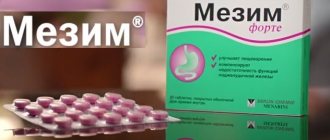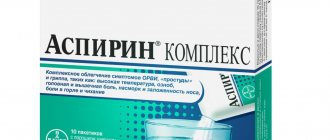Every mother knows that breastfeeding is the best and healthiest thing for your baby. Milk contains useful substances that form the child’s immunity, allowing him to saturate his body with the necessary nutritional components. If the mother feels unwell, has a headache, or notices the first signs of a cold, it is important to help her as quickly as possible. Not all medications are approved for breastfeeding. The safest and most common solution is Paracetamol during breastfeeding.
Paracetamol is the least toxic drug in its pharmacological group. WHO notes that it is safer than the world-famous Analgin. This is one of the few medications that is approved for breastfeeding. The drug is practically harmless, it can be used even for a newborn, and, of course, for a nursing mother. But before taking Paracetamol for fever, you must carefully study the instructions for use of the medicine and find the appropriate dosage.
Action of Paracetamol
Paracetamol is allowed during lactation, but it is necessary to use the medicine correctly. The drug provides:
- painkiller;
- anti-inflammatory;
- antipyretic effect.
It does not contain steroids or toxins, so the answer to the question whether Paracetamol can be taken during pregnancy and lactation will be positive. The main component and active substance of the drug is paracetamol. When dissolved, it enters the cells of the body, where it blocks the production and distribution of prostaglandin. This substance suppresses pain, so the drug is effective for toothache and headaches.
The medicine is available in various forms - tablets, drops, syrups, rectal suppositories. The dose in each format may vary. Dr. Komarovsky notes that active substances enter the bloodstream through the stomach faster than through the rectum.
Why do headaches occur?
An unpleasant feeling when a headache begins to hurt while breastfeeding is a common phenomenon among nursing mothers. Often such an illness is the root cause of a cold or viral illness. The pain can take on a different character - be throbbing or aching, acute or periodic. The pain syndrome is localized in different parts of the head, often affecting its entire surface. Often, headaches during breastfeeding are accompanied by vomiting or nausea, severe dizziness, general physical weakness of the body, etc.
Only a doctor can determine the exact root cause of the pain syndrome after examining the patient’s body. What could be the causes of pain in breastfeeding mothers?
- Nervous breakdown or emotional fatigue;
- Hypertension;
- Migraine;
- Hypotension;
- Osteochondrosis of the neck;
- Pathologies of the ENT organs (tonsillitis, sinusitis, etc.);
- Diseases of a cold, infectious or viral nature;
- Intoxication of the body (smoking, drinking alcoholic beverages, working in hazardous industries, etc.);
- Side effect after using certain medications (oral contraceptives, hormones, vitamin complex, etc.);
- Abuse of coffee, chocolate and other energy products;
- Somatic diseases (ophthalmological, nervous diseases, pathologies of the kidneys, liver and other internal organs);
- Lack of sleep;
- Uncomfortable position while breastfeeding a newborn;
- Water imbalance;
- Oxygen starvation.
Indications and contraindications
If a woman feels general weakness or malaise, she should consult a doctor. Only a doctor knows whether a nursing mother can take this medicine and in what doses it is best to use it. The medicine is used in the following cases:
- headache;
- colds;
- temperature rise;
- fever;
- joint pain;
- toothache.
It should be remembered that during lactation, everything that the mother consumes ends up in breast milk. Paracetamol in the right amount will not harm the baby, but it is important to monitor the child’s behavior, make sure that he does not develop a rash, upset bowel movements, or changes in behavior.
Mom can use Paracetamol, but taking into account individual intolerance to the components, as well as other contraindications. These include an allergic reaction, stomach ulcers and problems in the gastrointestinal tract, kidney and liver failure. These diseases are rare, so in most cases the medicine is allowed for everyone.
If you decide to take Paracetamol for a cold if your temperature rises, remember that the drug should not be consumed until the reading on the thermometer reaches 38.5. If the temperature is lower, the body itself produces antibodies, which speeds up recovery.
Application and dosage
Despite the safety and harmlessness of the medicine, do not think that paracetamol is a harmless vitamin that can be consumed for a long period in unlimited quantities.
The instructions provide a number of rules for the use of medicine by a nursing woman:
- Do not take tablets for more than 3 days;
- Drink only at temperatures above 38 degrees;
- The optimal dosage that will not harm a nursing mother is 500 mg three times a day;
- Leave breaks between doses of at least 4 hours;
- Take the medicine after feeding;
- Do not take your tablets with tea or coffee.
The dosage of paracetamol during feeding is no more than 1.5 g per day, which involves taking one tablet 3-4 times a day.
How to take Paracetamol for nursing mothers
Having found out whether a nursing mother can take Paracetamol, you should clarify at what time the medicine should be taken. The optimal time is immediately after breastfeeding. Thus, the body will have 3-4 hours before the next feeding to remove part of the active substance. And no more than 1% of the dose that the mother took will enter the child’s body with milk.
The highest concentration of the drug is observed 40 minutes after taking the medicine. It is better to refuse feeding at this time, take the maximum allowable pause, and distract the baby.
How often can you take the medicine, the course of administration, dosage should be prescribed by a medical specialist. An adult woman can take Paracetamol three times a day. In this case, a single dose should be 500 mg. The interval between doses should be no more than 4 hours. The course of treatment is limited to 3 days. If during this time the symptoms do not go away and the disease does not recede, be sure to seek medical help. Only a doctor can prescribe adequate treatment that will not harm either mother or baby.
Analogues of Paracetamol during breastfeeding
Although the product is considered a safe medicine, you can still use other drugs that contain Paracetamol. It is allowed to use them in any form, including suppositories and powder. The most popular include:
- cefekon;
- efferalgan
- panadol;
- calpol;
- rapidol
- perfalgan.
Before using the products, it is recommended to review the instructions for use, as well as the price, reviews and analogues of medications. It is better to avoid using combination drugs, as they cause more side effects.
Paracetamol is a medicine with a low level of toxicity, so it is allowed to be used by nursing mothers.
It is recommended to take the drug in a course for three days, or use it as a one-time pain reliever. If a course of treatment is necessary, a doctor can prescribe it, and the doctor also selects the appropriate dosage of the drug. The permissible limit should not be increased, otherwise more Paracetamol will enter the baby’s body than is permissible.
Alternative
The main thing to remember about Paracetamol is that it is safe when used correctly and in an individually selected dosage. In pharmacies you can also find analogues of the drug, medicinal substances with one active ingredient. As an alternative, mothers can take Ibufen, Nurofen, Sumamigren, Citramon. They are also harmless and safe to feed.
In order not to harm yourself and your baby, if unpleasant symptoms appear, you should immediately consult a doctor and find out the cause of their occurrence. By simply eliminating symptoms, you blur the picture of the disease, which can lead to the development of complications. Be attentive to yourself and careful when choosing medications.
Approved drugs
Acceptable medications during breastfeeding should be used only once, and not as a course of use.
To treat headaches in nursing mothers while breastfeeding, therapists recommend using only certain types of medications.
Ibuprofen
An affordable medicine for headaches during breastfeeding is Ibuprofen. It is aimed at eliminating pain and suppressing the inflammatory process.
Ibuprofen for headaches during breastfeeding is used to eliminate accompanying symptoms: dizziness, increased temperature, nausea, etc.
After taking the tablet, the therapeutic effect appears within 30-40 minutes. It will take 2-2.5 hours to remove the medicine. After this period of time, the young mother can begin feeding the newborn.
Side effects: quite rarely, the drug can cause pain in the abdomen, an allergic reaction, and suppression of hematopoiesis.
Paracetamol
If, along with an increase in body temperature, a headache begins to hurt, treating headaches during breastfeeding is allowed with Paracetamol. The medication is an effective remedy against acute pain and inflammation.
The effect of Paracetamol is achieved after 30-40 minutes. The half-life of the drug is 4-5 hours; during this time it is recommended to stop breastfeeding the baby.
Side effects: vomiting or nausea, severe pain in the stomach, negative effects on the liver, allergies.
Ketorolac
What else can you take for headaches while breastfeeding? When Paracetamol or Ibuprofen is not available at home, but Ketorolac is present, a nursing woman is allowed to take 1 tablet to suppress discomfort.
Ketorolac is an NSAID, it is safe for adults, but there is no evidence that the medication does not harm the child’s body.
Naproxen
This remedy for headaches during breastfeeding is completely identical in indications to Ketorolac.
No-shpa
What else can you drink for headaches while breastfeeding? In exceptional cases, a nursing woman can take a No-Spa tablet. Course use of the drug is unacceptable.
How to read compatibility tables on the e-lactancia website
In the e-lactancia.org directory you can find all the necessary information on the effect of the medication on lactation in general and on the child’s body. In the search bar you need to indicate not the trade name of the drug, but its active substance.
All medications are divided into 3 risk levels: compatible, conditionally compatible, incompatible.
Table of compatibility of paracetamol with breastfeeding
To find out how actively the medicine penetrates into breast milk, just pay attention to some points in the table:
- The molecular mass of a substance is measured in Daltons. An active substance with a molecular weight of 200 Da or less freely passes into the “holes” of the blood-milk barrier. If the molecular weight is 500 Da, then the substance does not penetrate beyond the barrier and does not enter the milk. Substances with an average molecular weight of 200 to 500 Da have a low permeability rate. In this case, the degree of binding of the substance to proteins is taken into account.
- Proteins are heavy structures that have difficulty passing through the blood-milk barrier. The more molecules of the substance combine with proteins, the less the drug will penetrate into breast milk.
- Paracetamol half-life (T ½) This is the time from taking the tablet until the moment when half of the maximum content of the substance in the blood remains in the body. A certain safe period after which you can breastfeed your baby.
- Milk/blood plasma ratio (M/P ratio) Shows the content of a substance in milk in relation to the mother's blood plasma. If the ratio is 1/1, then the content of paracetamol in the blood and milk is the same.
- Relative pediatric dose (Relat. Ped. Dose) This item shows what percentage of the child’s age dose of the substance will be received through milk. For example, an indicator of 2% means that the child will receive 2% of the age-specific daily dose of the drug through breast milk.
Effect on the child and side effects
If you follow the recommended dosage regimen, Paracetamol for hepatitis B is completely safe and rarely causes complications in the body of infants. The concentration of paracetamol in breast milk is about 70% of the dose taken, so side effects from treatment may include symptoms and pathologies listed in the list of side effects in the instructions for children's Paracetamol in the form of a suspension. It can be:
- allergic reactions in the form of skin itching, rash, peeling;
- anemia (manifested by pallor, poor appetite, lethargy, decreased hemoglobin in the blood);
- disturbances in kidney function (decreased daily diuresis, change in urine color, sedimentation).
The appearance of any of the listed signs is a reason to stop taking paracetamol and consult a doctor.
Important! If the mother takes Paracetamol for more than five days, the child may have an increase in the content of methemoglobin in tissues (more than 1-1.5%). The pathology is characterized by acute tissue hypoxia and is manifested by cyanosis of the skin and the appearance of a grayish tint. If a child accidentally hurts himself, the blood will be darker in color than normal.










